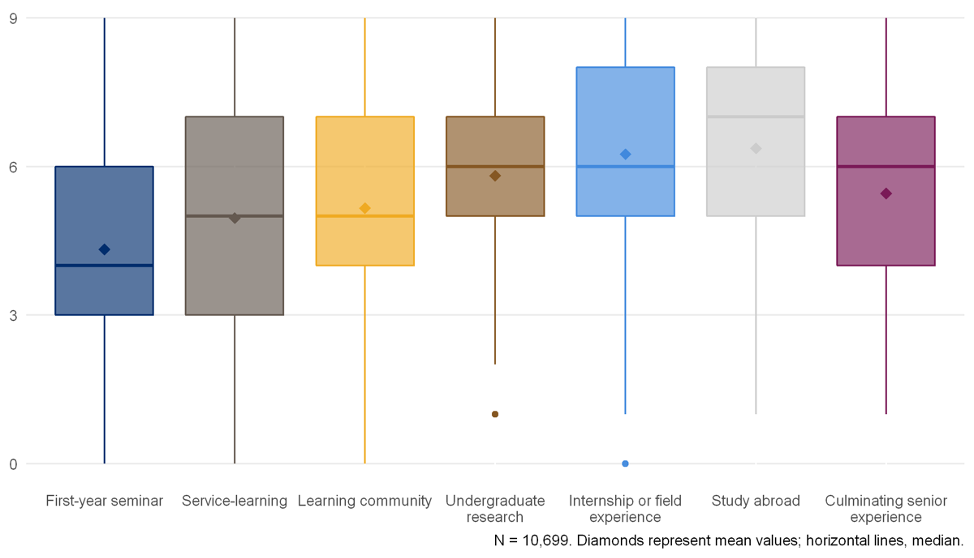What makes HIPs “high-impact?” How well do experiences labelled as HIPs deliver on their transformational promise? These and other questions guided a special NSSE-affiliated project Assessing Quality and Equity in High-Impact Practices (HIPs), supported by Lumina Foundation, that examined quality and equity in HIPs for over 20,000 students at 57 colleges and universities in 2019. A second phase of data collection is planned for 2021.
Assessing Elements of HIP Quality and Equity
The first phase of research resulted in the most comprehensive data yet on HIP implementation and equity, exploring the extent to which HIP experiences incorporate elements theorized to account for their educational benefits and who has access to high-quality HIPs.




